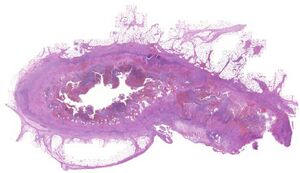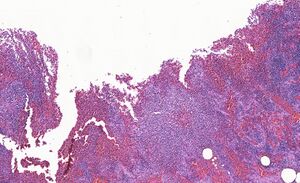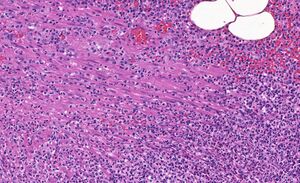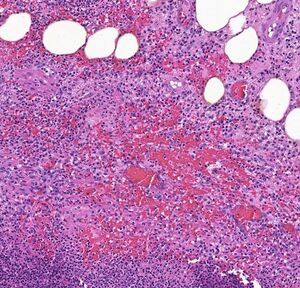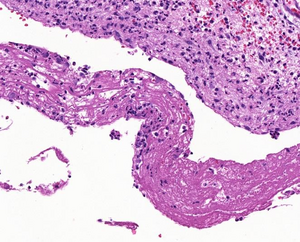27. Acute appendicitis
Staining: HE
Organ: Appendix
Description:
The mucosa cannot be seen and is replaced by ulceration. There is haemorrhage in the whole sample. The whole appendix wall is infiltrated by granulocytes. Some places we can see liquefactive necrosis. The muscular layers are almost obliterated, very little muscle remains. On the serosal side can we see some fibrin.
Diagnosis: Acute appendicitis
Causes:
- Often idiopathic, sometimes due to closure of the lumen
- Fecalith (hard piece of feces)
- Part of fruits etc.
Theory:
Acute appendicitis can be a fatal disease. Because of the extensive liquefactive necrosis (wet gangrene) there can be a perforation of the appendix wall. This can cause the inflammation to spread to the peritoneum. Peritonitis is life-threatening as it can cause sepsis. The fibrin we see is the beginning of a peritonitis.
The type of inflammation is a phlegmone, which means that the inflammation is inside connective tissue (in contrast to an abscess or empyema).
It usually presents with periumbilical pain or pain in the lower right quadrant and tenderness at the McBurney’s point. Symptoms can be similar to cholecystitis and uterine tube inflammation.
In some cases can a periappendicular abscess develop. The pyogenic membrane around the abscess can prevent it from spreading.
The treatment of acute appendicitis is removal.
